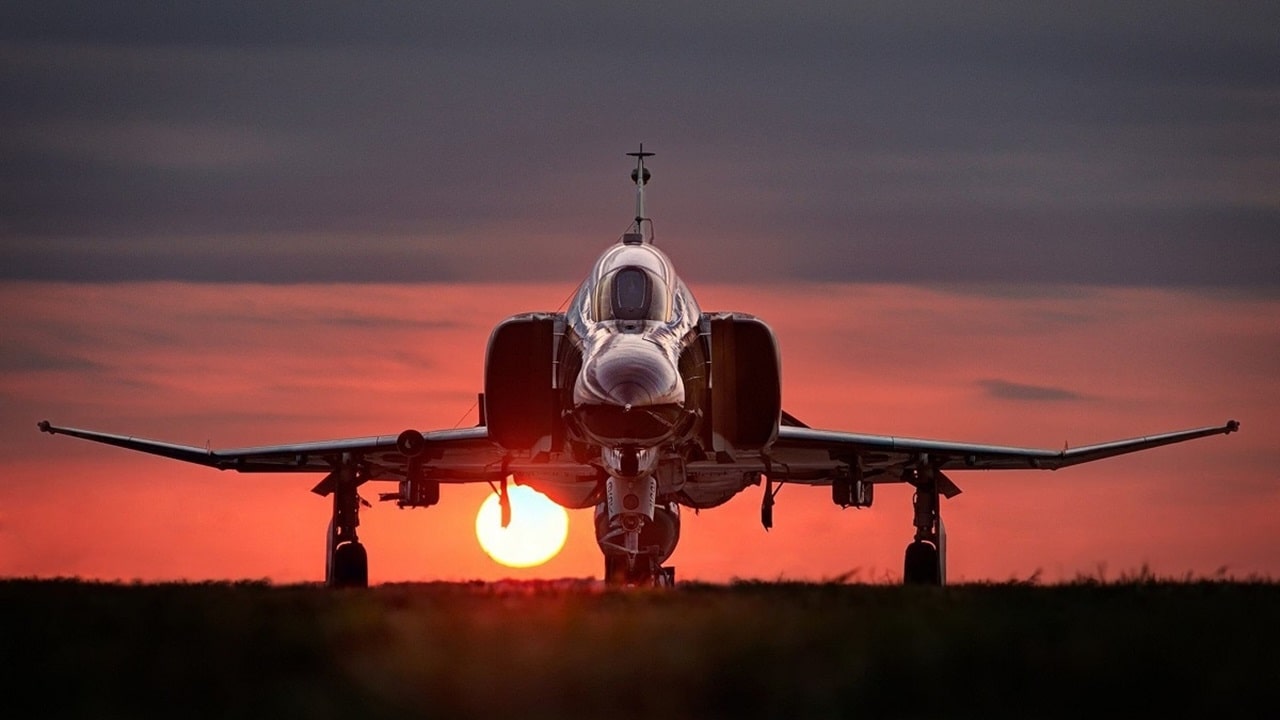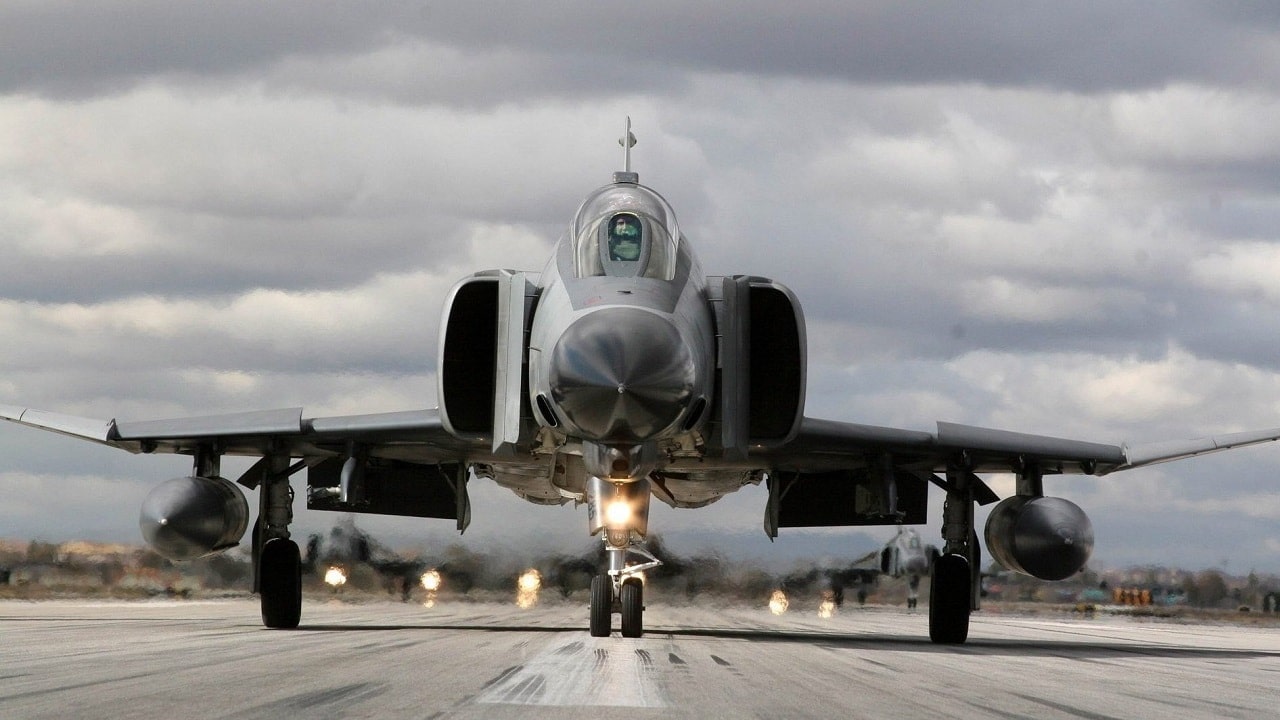F-4 Phantom: The Cold War Warplane Russia Hated
Although largely retired, the F-4 Phantom is well respected among aviation buffs and military experts for its honorable service record.
Although largely retired, the F-4 Phantom is well respected among aviation buffs and military experts for its honorable service record.
Some consider this twin-engine, all-weather, long-range supersonic jet to be the best Navy combat plane in the service’s history.
In fact, the platform served as both the Navy and Air Force’s premier air superiority aircraft for over two decades.
This fighter bomber made its fame during the Vietnam War and quickly became one of the most formidable airframes in the post-World War II era.
The F-4 Phantom’s Origin Story
Following the Second World War, the U.S. Navy’s need for a new attack fighter became apparent. Manufacturing giant McDonnell Aircraft revised its existing F3H Demon naval fighter to suit the modern era better.
Its engineers used two General Electric J79 engines in the new prototype that enabled the airframe to fly at speeds reaching Mach 1.79 (times the speed of sound). Ultimately, the Navy declined this platform, since the incoming Grumman XF9F-9 already fulfilled its requirement for a supersonic fighter. At this point, McDonnell did not give up and instead refocused its efforts on creating a new all-weather fighter bomber. By the late 1950’s, the Navy selected McDonnell’s F4H prototype which was renamed the “Phantom II.”
Less than three years after completing its first flight, the Phantom officially entered service with the Navy in 1961. This airframe became the service’s fastest, highest-flying, and longest-range fighter. Initially, the Phantom was designed without a gun and relied instead on guided missiles.
However, during the Vietnam War, the platform was armed with a gun so that it could better fight in the close-quarters combat of the conflict.
The F-4’s Specs and Capabilities
With nine external hardpoints and the ability to carry nearly 16,000 pounds of weapons, the Phantom surely packed a punch. In addition to carrying air-to-air and air-to-ground missiles, this airframe can be fitted with guided missiles, unguided missiles, and nuclear bombs.

Other armament capabilities have been detailed by the National Museum of the USAF. On the U.S. Air Force’s 163rd Attack Wing site, it states, “In its air-to-ground role, the F-4C could carry twice the normal load of a WWII B-17
. The armament loaded on the aircraft on display is a typical configuration for an F-4C in 1967. It consists of four AIM-7E and four AIM-9B air-to-air missiles, and eight 750-pound Mk 117 bombs. The aircraft also carries two external fuel tanks on the outboard pylons and one ALQ-87 electronic countermeasures (ECM) pod on the right inboard pylon.”
Which Records Did the Phantom Set?
Powered by two J79-GE-17 jet engines manufactured by General Electric, the Phantom can travel at speeds reaching Mach 2.2. This incredible feat led the Phantom to set sixteen records for altitude, speed, and climb.

The platform had an initial climb rate of more than 41,000 feet per minute, while its service ceiling was just over 56,000 feet. In addition to these specs, the Phantom was fitted with a host of other sophisticated capabilities.
Kris Osborn has noted that “The F-4J was also equipped with the AN/AWG-10 fire control system housed in an enlarged radome. This set used an AN/APG-59 pulse-Doppler radar in place of the earlier APQ-72. This new radar was designed to detect and track low-lying aircraft and to distinguish them from sea/ground returns.”
How the F-4 Became the Most Produced American Supersonic Platform in History
The Phantom was so advanced that the Marine Corps and Air Force also adopted the platform. In addition to serving in the U.S. military, Phantoms have flown for militaries across the globe, including in Greece, Australia, Germany, Iran, Israel, Japan, the United Kingdom, and South Korea.
Between the late 1950s and the early 1980s, over 5,000 Phantoms were built by McDonnell Douglas (which would later merge with Boeing), making it the most-produced U.S. supersonic military aircraft in history. Over the years, newer iterations of the Phantom were designed in order to ensure the platform retained an edge over competitors.
Air Force Technology explains which services and foreign militaries flew which variants: “The F-110 Spectre, F-4C, D, and E are the variants for the U.S. Air Force. The internal M61 Vulcan cannon was introduced in F-4E.
The F-4G Wild Weasel V was an upgrade of F-4E and has the ability to carry anti-radiation missiles. The F-4K and M variants, developed for the British Army, have Rolls-Royce Spey turbofan engines. The F-4EJ is the licensed variant built by Mitsubishi for Japan; 138 aircraft were built by the company.”
Although no longer in service, the F-4 is highly respected in aviation circles. The platform earned its claim to fame for its combat record in Vietnam.
However, the Phantom also flew throughout the Cold War and even participated in Operation Desert Storm in Iraq before its retirement.
Author Expertise
Maya Carlin is an analyst with the Center for Security Policy and a former Anna Sobol Levy Fellow at IDC Herzliya in Israel. She has by-lines in many publications, including The National Interest, Jerusalem Post, and Times of Israel. You can follow her on Twitter: @MayaCarlin.
Image Credit: Creative Commons.


